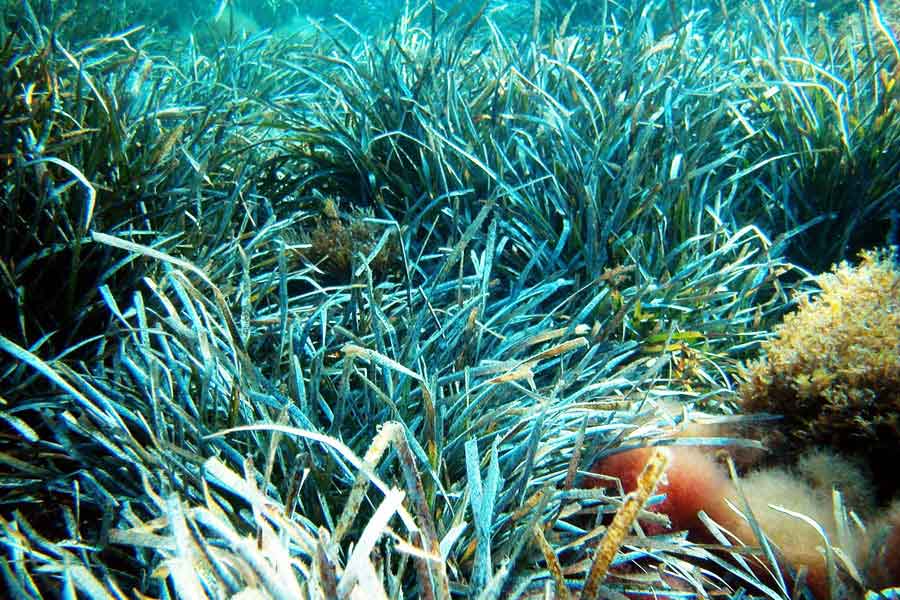
A group of scientific divers who were investigating marine algae around the island of Formentera, near Ibiza, documented the largest and oldest living organism ever discovered. It is a type of seagrass called Posidonia oceanica, measuring eight kilometers in length. Considering that this plant has a growth rate of only two centimeters per year, scientists estimate that the original shoot appeared about 100,000 years ago.
Although it is a well-known area for local divers, the enormous seagrass had gone unnoticed because it is scattered on the seabed among thousands of other plants. Genetic marker methods were used to demonstrate the same DNA at both ends of the immense seagrass. It is estimated that there are approximately 50,000 square kilometers of seafloor populated by this plant in the Mediterranean. These extensive meadows have a great capacity to filter suspended particles, which significantly contributes to maintaining water transparency.
The underwater meadows of Posidonia in the Mediterranean cover around 50,000 square kilometers and absorb about half a million tons of carbon dioxide per year, making them the most important carbon sinks in the world. If these plants were to disappear, the problem of global warming would be significantly exacerbated because they would cease to be a sink and become a generator of carbon dioxide.
Perhaps the discovery of this immense living organism should prompt us to reflect on its care and its fundamental importance for our own survival. After all, this great plant remains at a depth of only 18 meters, in the midst of the oldest navigation route known to humanity. It was a witness when the first humans submerged themselves in the waters of the Mediterranean. Roman galleys and Viking ships sailed above it. It witnessed the passage of human history from the beginning of time, steadfast and persistent.
Within its ancient tufts, hundreds of extinct fish species found shelter and refuge, making way for new life forms that were offered a safe haven. It witnessed the sea changing and life renewing with each of the 400,000 tides it endured. It survived storms, tempests, and increasingly large anchors that threatened to break it.
Its tenacity never wavered, growing until the present day, keeping the waters of the Mediterranean clean, purifying the planet’s air. It fought against everything, even against humanity, whom it protects and yet persists in soiling its only sanctuary. Daughter of time, mother of the seabed, nurturer of its delicate inhabitants. Growing relentlessly to this day, with the determination of an old man who never gives up, with the strength of a giant that refuses to succumb to death.
«You cannot defend what you do not love, and you cannot love what you do not know.»

